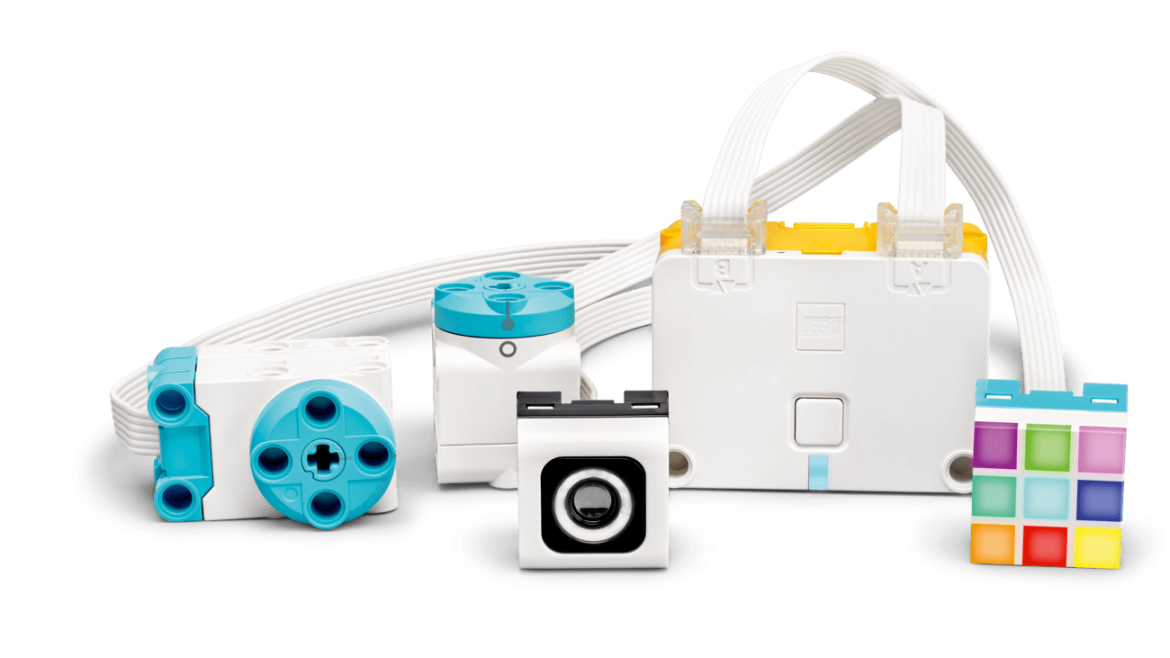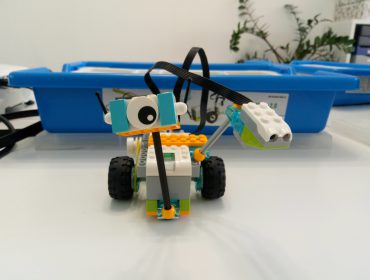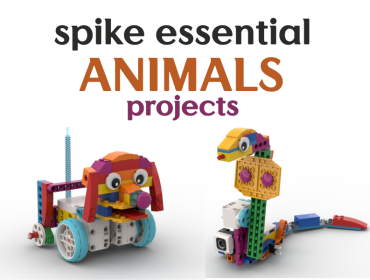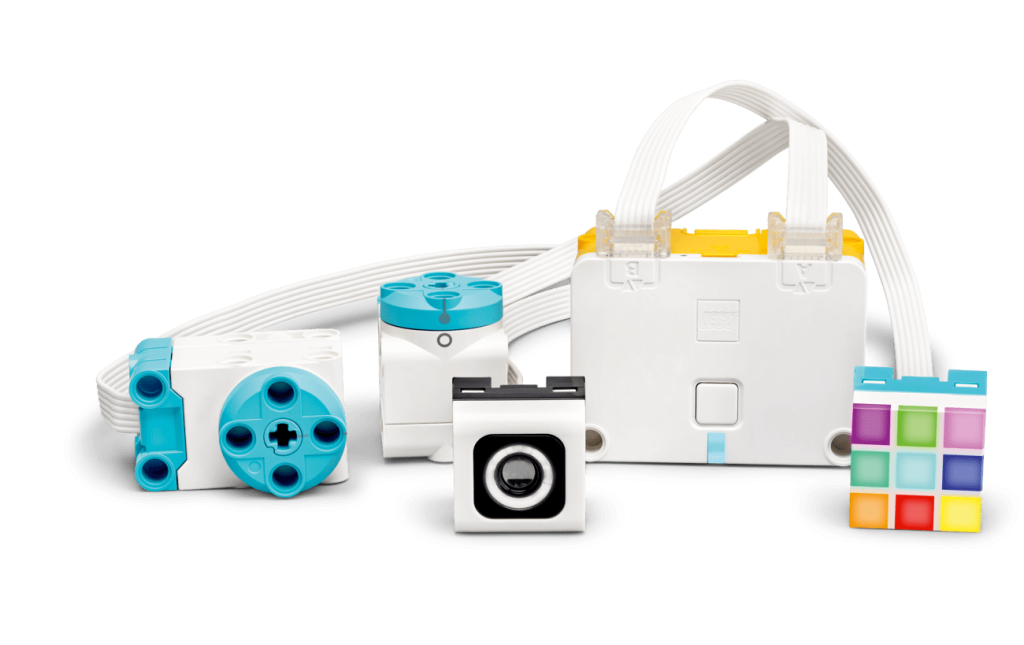
This may not be entirely logical, but we would like to start a review article of the educational set Lego Spike Essential 45345 by mentioning its predecessor, “Lego Wedo 2.0”.
As soon as Lego Education set its sights on updating solutions for educational platforms, the first to be replaced was the kit Mindstorms EV3, which has long been the flagship of educational robotics (the Spike Prime set had the honor of replacing it).
This meant that farewell to Wedo 2.0 would not be far off. Many of us expected that the Wedo 3.0 series would see the light and that the basic composition of parts would be preserved, and the line of electronic components would expand – we wanted the hub to add a third port (two ports for independent motors and one for sensors). But hopes were not destined to come true – Lego Education releases the Spike Essential set, which ideologically became the “little brother” of Spike Prime, rather than a continuation of Wedo 2.0.
Therefore, no matter how optimal the kit Lego Wedo 2.0 may be in all respects, it has been retired and withdrawn from sales. It’s time for Spike Essential.
Further in the article, we will look at the features of the Spike Essential set and reflect on whether it managed to live up to expectations (being a solution to the new generation of the Lego Education educational platform). Willy-nilly, we will make comparisons and parallels with Wedo 2.0 in places.
Package
The new color scheme for Spike solutions is a bright yellow container that doubles as a storage unit for parts (and packaging at the same time). Having a dedicated container is a common (and nice) feature of all Lego Education products, and the Spike family is no exception.
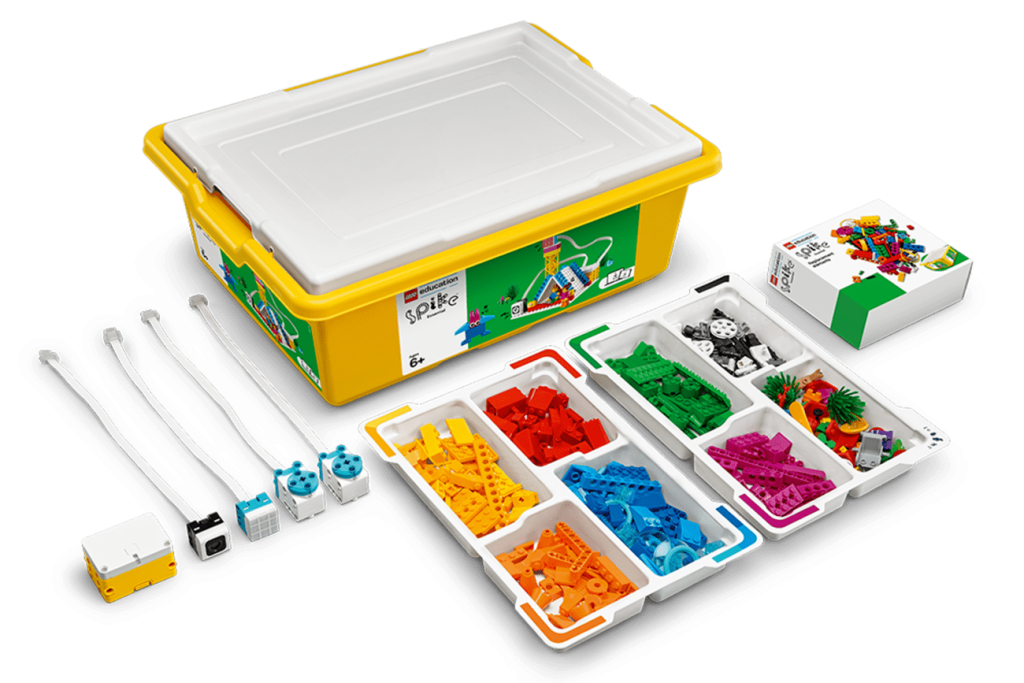
At the top of the set there is a traditional tray for sorting and placing parts (in two parts), and at the bottom there are electronic elements, wheels, large white platforms and yellow console columns. To sort the parts, the developer includes stickers in the set – this time the separation is solely based on the colors of the parts. And the stickers identify the colors.
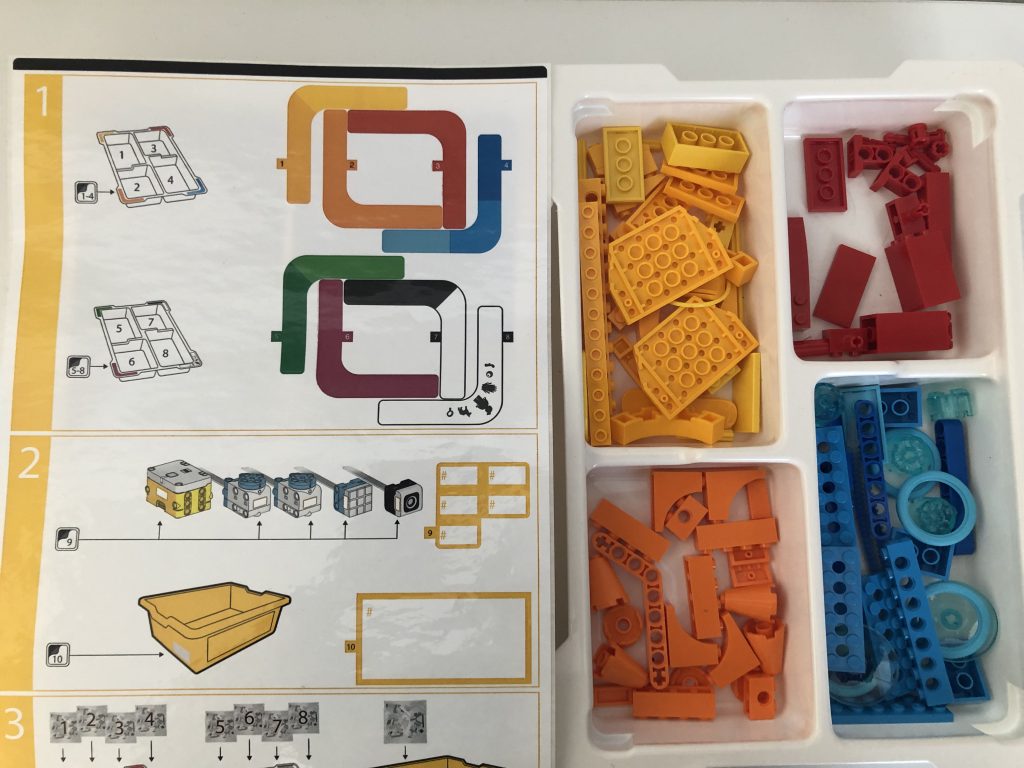
In the basic version, the set consists of 449 parts, and it can also be noted that in addition to the main set, the kit includes a small set of spare parts (Replacement pack), which is a significant advantage – since the variety of parts makes them very easy to lose. The spare set also includes rubber yellow belts – many thanks for this, because the first thing children do when opening the lid of the set is to test these belts for strength – and these tests are not always successful.
Lego Parts
The color scheme of the details is based on the colors of the rainbow; the colors themselves are bright and “screaming” in places. The color palette is represented by the following composition: yellow, orange, blue, red, green, purple, black and white. A definite plus (it was mentioned above) – sorting into compartments occurs precisely by the color of the part, and not its functional purpose, for the moment of tidying up the workplace – this is undeniably convenient, especially in the first lessons.
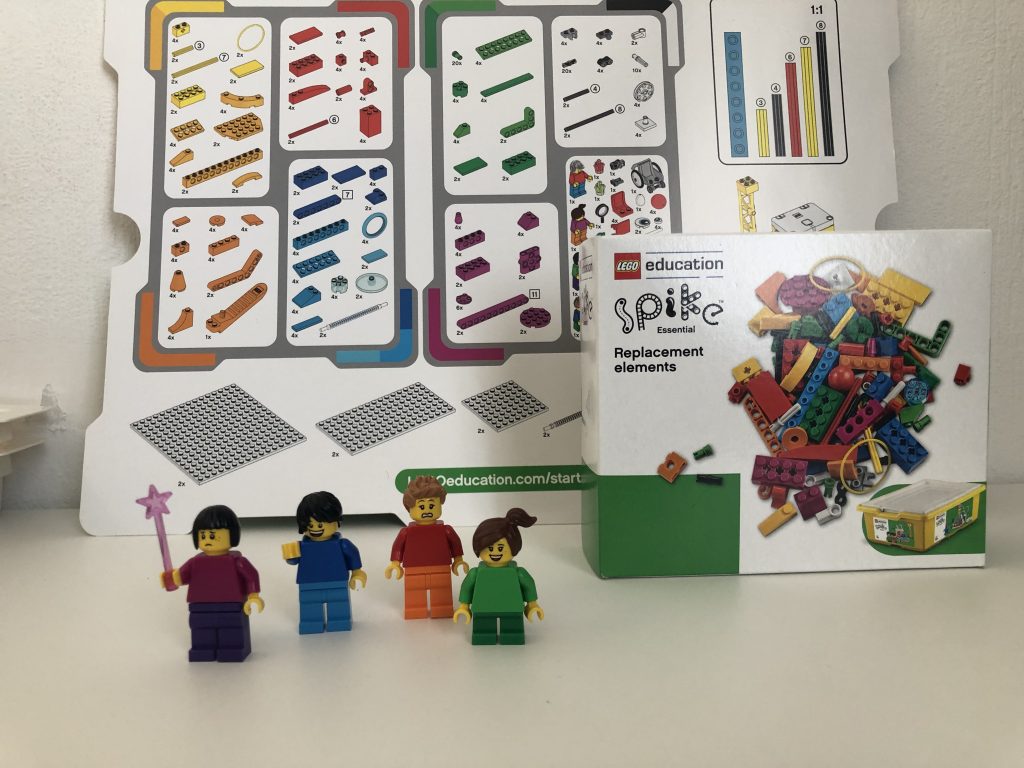
However, each coin has two sides (if not more!) – due to the fact that there are parts of the same color in the compartment – finding the right part takes more time, since they all merge into one large colored spot. In which direction the balance of lesson time will shift will largely depend on the model being studied, but according to the first impression, the search for the required part will still take longer in comparison with Wedo 2.0.
Lego parts is the quintessence of any Lego set. And the educational series in particular. As stated earlier, the set contains a total of 449 pieces, including 4 minifigures. The presence (and absence) of minifigures is a controversial issue. Sometimes children get so carried away by playing with a minifigure that they simply do not perceive the information.
But on the other hand, there are projects in which minifigures allow you to immerse yourself in the subject as much as possible and feel the atmosphere. For example, a lesson dedicated to preparing astronauts for a flight and studying the Centrifuge model – in the case when a minifigure is in the chair and the centrifuge is spinning at maximum speed – the effect of being in the astronaut-training center is simply off the charts! In general, you need to look for a middle ground in the matter of their use.
And before we discuss the main details, we should mention the heartbreaking decision from the developers – not to include a single gear in the set, not even a single one! To say that this causes a storm of indignation is to say nothing. One of the main disadvantages of Spike Essential. There is an explanation for this fact – it is understood that two kits will be used in combination during the classes: Spike Essential and BricQ Motion.
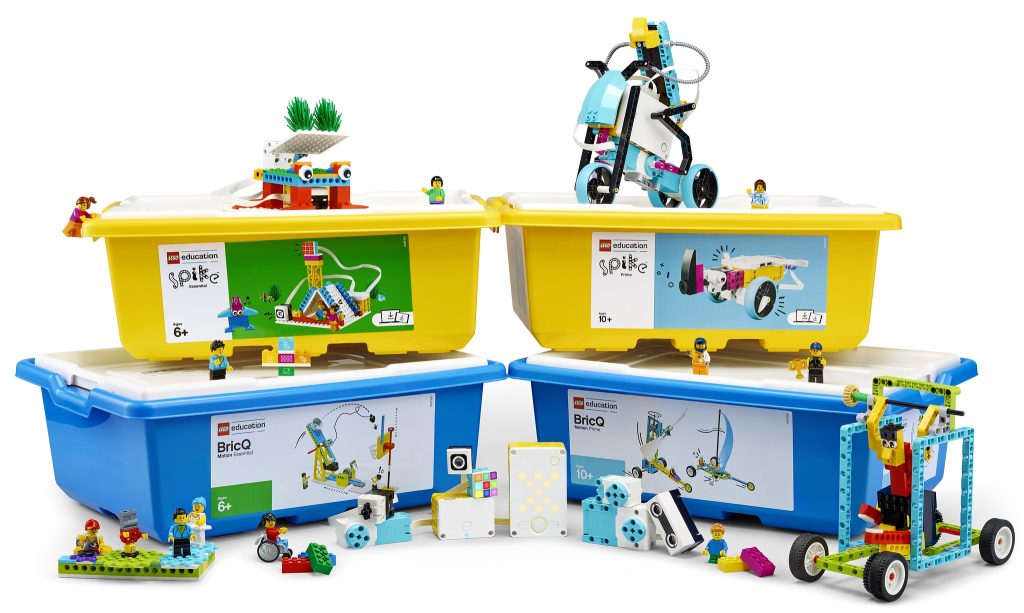
If we talk about the integrated use of Spike Essential and BricQ Motion, then this means twice as much storage space, it is more difficult to keep track of order on the desk, and what to hide – the cost of such a solution also increases several times. That is why we are so upset by the fact that it is not possible to assemble a simple mechanical transmission… Only the direct influence of the motor on the actuator. The exception is a belt drive, but of course this is not enough. In short, the composition of Wedo 2.0 in terms of gears in comparison with Essential seems incredibly optimal. A potential problem that circles and sections that have adopted Spike Essential will certainly encounter is the issue of developing robot models; without gears, imagination will not be enough for a sufficient number of models.
If you are looking for more robot model ideas for classes, check out our designs.
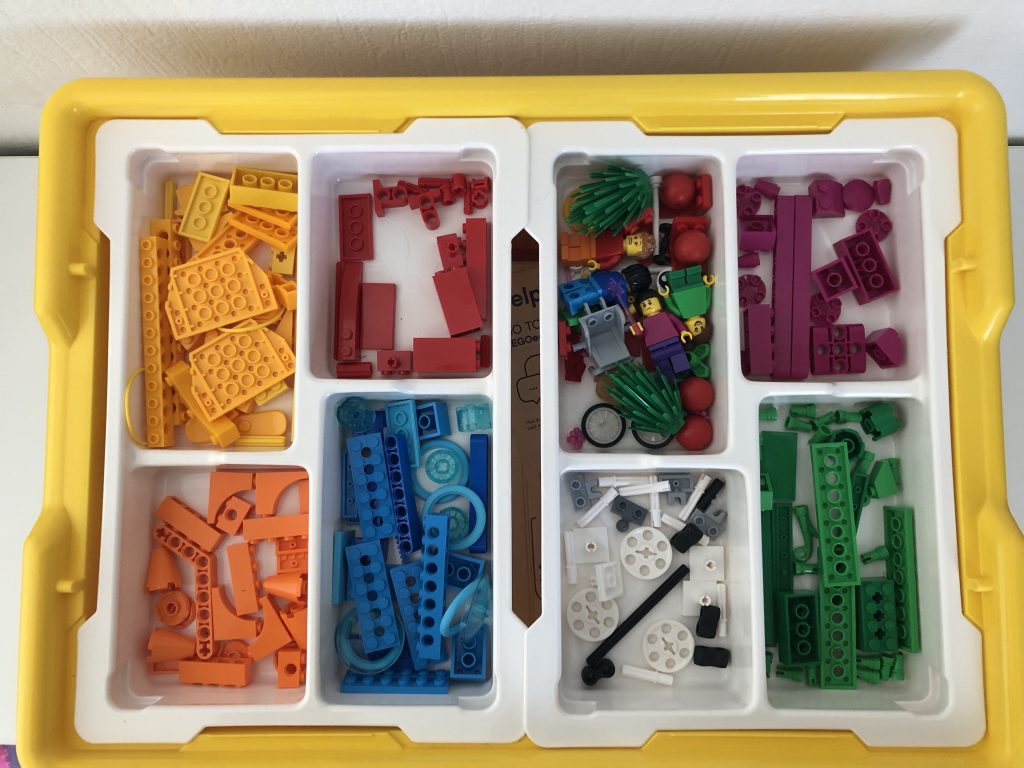
Like Spike Prime, the Essential parts come in two types – the classic brick and plate system, and the Technic series parts. In terms of the proportion of certain elements, the ratio feels close to 50/50. The set also included a “transitional” element between the two systems: a 2×4 brick with three cross axle holes. It was first presented in Prime. Another legacy from Prime is the newly designed wheels (and are said to have reduced friction with the surface).
Special platforms can be used as a base and frame for robots: 16×16 modules (2 pcs.), 8×16 modules (2 pcs.) and 8×8 modules (2 pcs.). There are also construction yellow console columns – they can be used for load-bearing elements of frames.
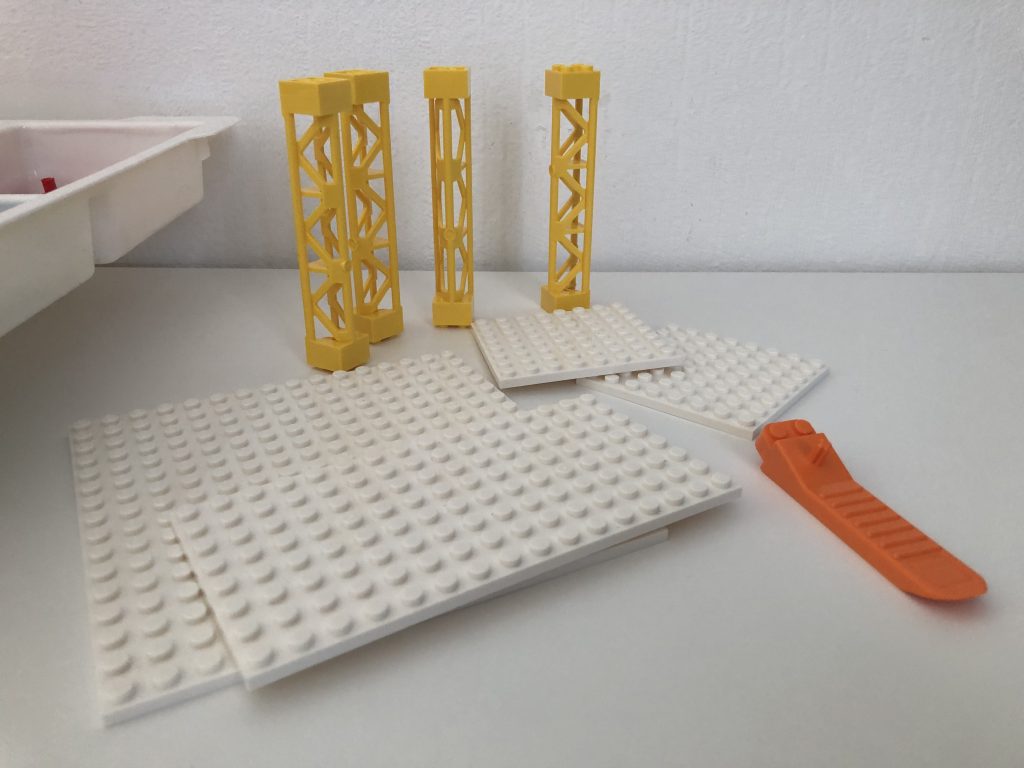
Considering that the set is intended for elementary school children, I would like to see more details of the classic system, since working with Technic already implies experience in design. This is especially acute when installing electronic components – they do not have classic protrusions; only holes and pin connections can be used to interface with other parts (Technic system). With step-by-step instructions, in which the connections are thought out by an experienced developer, there will be no problems, but not every 6-year-old child can handle building a model on his own.
With the naked eye you can also see a large number of decorative elements – which will allow you to highlight your project with a unique and individual design.
To summarize, unfortunately, it will not be possible to build an interesting model in terms of the variety of mechanical gears, changes in direction and plane of movement, but at the same time, giving your project a memorable design is always welcome.
Electronics
In total, the kit included five electronic components: an intellectual hub with a built-in gyroscope (hereinafter simply “hub”), a 3×3 light matrix, a color sensor and two small angular motors. In addition, the hub comes complete with a rechargeable battery. As noted earlier, there are no protrusions on the electronic components; they will need to be connected to the base of the robot using pins.
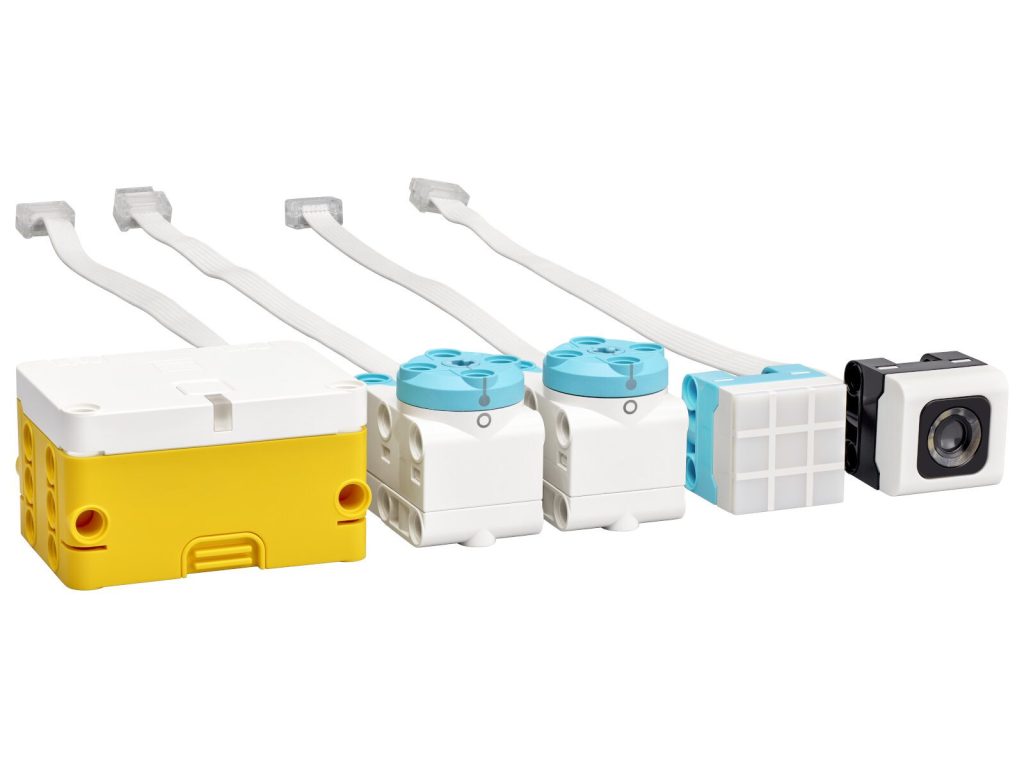
The Hub
The new intellectual hub is similar in appearance to its brother from Spike Prime. The advantage is its compact size, which allows you to maintain the overall shape of the model without shifting the emphasis to the hub. But there are only two ports for connecting peripheral devices (motors and sensors). The third port turned out to be an unrealistic hope.
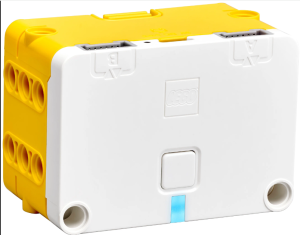
Connecting the hub to a laptop is available in two ways – via a USB cable or the more conventional Bluetooth method. Naturally, the dominant method of communication is Bluetooth; since Wedo 1.0, robot autonomy has been the most pressing issue. The USB cable is mainly used to recharge the battery.
Angular motors
Having two motors at once is a definite plus! This is exactly what the Wedo 2.0 kit was missing. However, all the charm of this comes to naught when there are only two ports in the hub. Each motor has a built-in rotation sensor, which can be used for more precise control and positioning.
Colour Sensor
The colour sensor can recognize eight predefined colors (in accordance with the color gamut of the set parts), and also operate in the mode of determining the intensity of the reflected color. One of the peculiarities of the work is that the object must be in close proximity to the sensor, the recommended distance is about 1-2 centimeters.
Light Matrix
The new product that is generating the most interest among Spike Essential electronic components is the 3×3 Light Matrix. At its core, this is a display of 9 segments, and you can control both the entire matrix and a separate segment simultaneously. Thanks to the built-in blocks in the programming environment, setting it up to work in the desired mode is quite simple. From the point of view of giving the project some multimedia and “liveness” – the light matrix is an excellent solution!
To summarize in terms of electronic components, their variety is pleasing; there is great potential for use in projects. Functionality and performance (both in terms of connection and in terms of uninterrupted operation when executing the control algorithm) are also excellent, everything without failures. The only remaining disappointment is the presence of two ports on the hub and the absence of a distance sensor, which has been so loved since the Wedo series.
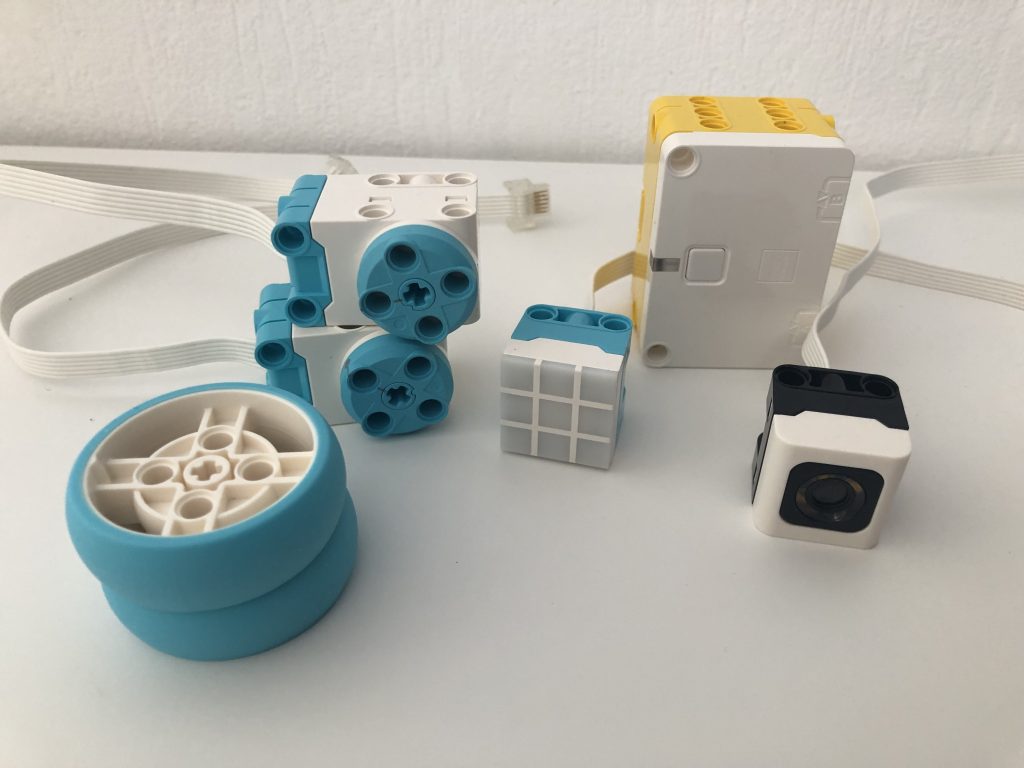
Application LEGO Education SPIKE™
In terms of programming, two methods are available: block-icon programming (as in Wedo 2.0) and text Scratch-based language. Both programming environments are available in the LEGO Education SPIKE™ app.
In turn, the LEGO Education SPIKE™ application is available for installation on PCs, laptops and tablets. Moreover, the programming capabilities are the same, regardless of which device you plan to use, that is, there is no effect of reduced functionality.
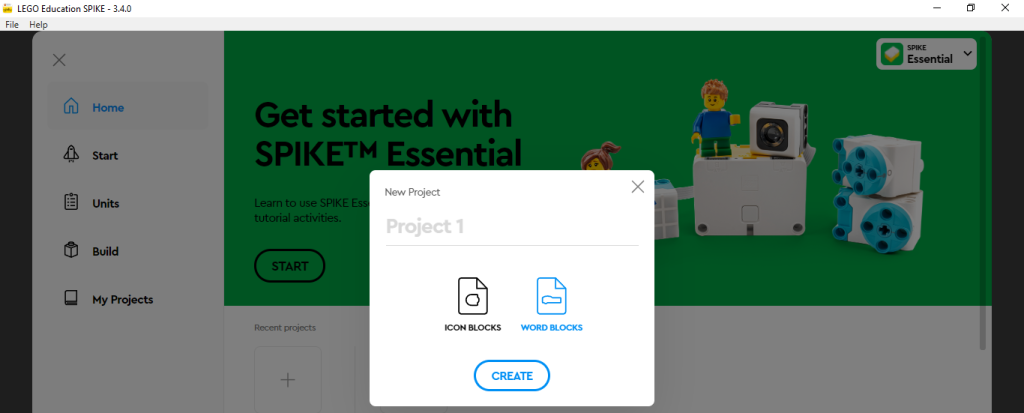
By the way, the same application is used to program Spike Essential and Spike Prime. This can be a very useful solution if you have both sets in your arsenal.
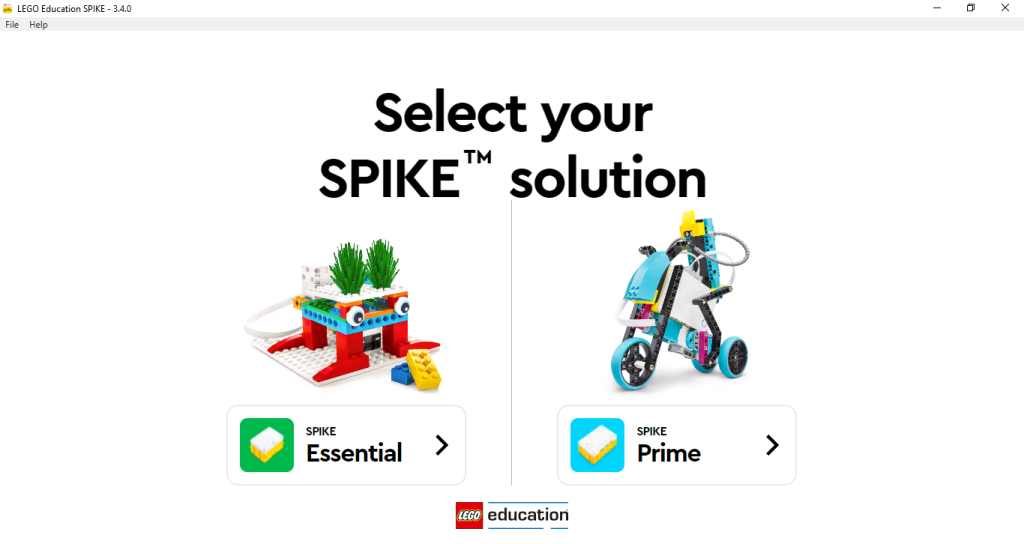
The interface of the block-icon programming environment is quite convenient and understandable. Drag and drop icon blocks into the work area and build a control algorithm. Everything is already familiar to us from the Wedo 2.0 programming environment. This approach will allow the youngest children to create their first programs without much difficulty. It is enough to know the numbers from 0 to 10, and everything will definitely work out.
On the other hand, for more advanced users, it is possible to write algorithms and programs using the Scratch-like language. The Scratch-based approach, familiar to many teachers and perhaps even children, will allow you to create more interesting and complex control algorithms.
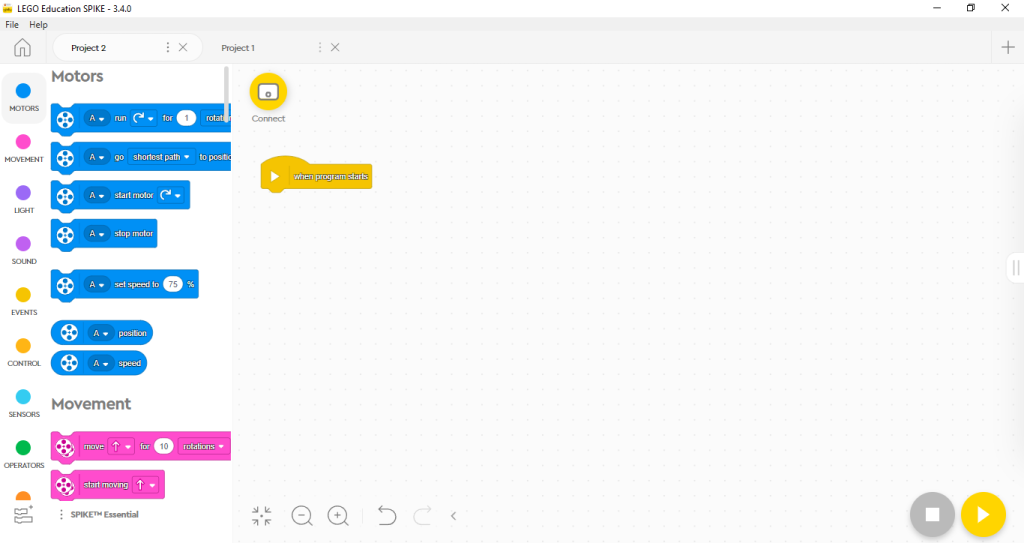
Operating system requirements: Windows 10 (or Mac OS) must be installed on your PC. You will need at least 3Gb of free space on your hard drive.
Conclusions
Spike Essential itself is a very controversial kit. Variety of parts, new electronic components, two motors (oh Hallelujah!). A big plus in the two forms of programming environment, the Scratch-like platform is especially pleasing. It is important to both see and note these advantages of the set.
The lack of gears and a distance sensor in the set is very disappointing. These are the elements, without which it is impossible to imagine an optimal educational kit. And if you can fill the gap in gears with the help of an additional set of BricQ Motion, then the absence of a distance sensor cannot be mitigated.
Every robotics club and teachers in particular, will be able to take advantage of the strengths of the Spike Essential constructor when organizing classes. However, these gaps in the equipment will require additional efforts and more thorough and thoughtful preparation for classes! Hello and welcome Spike Essential!
Have a cool robotics classes!
